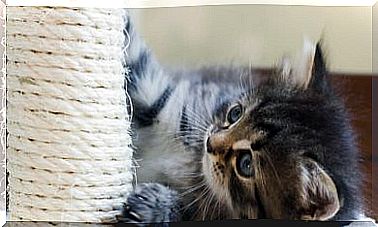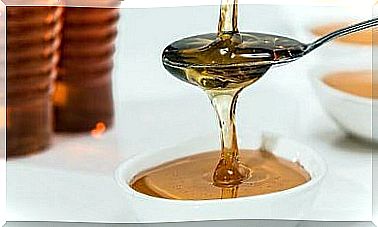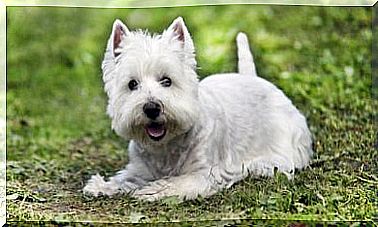Feeding Of The Arctic Hare
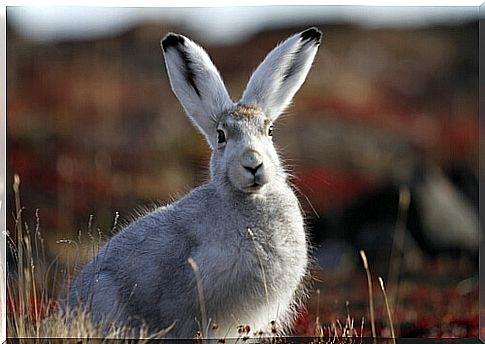
The arctic hare belongs to the order Lagomorpha and to the family Leporidae . It is considered one of the largest hares in the world and is characterized by having to live in cold lands, preferably with snow. Would you like to know more about this fabulous animal? Well, don’t go.
Characteristics of the arctic hare
At first glance, the most characteristic thing about this hare is its pure white color with small black spots on the tips of its ears. This fur serves to perfectly camouflage itself from its predators. Its skin is very thick, which allows it to withstand the low temperatures of its habitat.
They usually weigh between 2.5 and 5.5 kilos and measure from 43 to 70 centimeters. Despite its large size, which is truly amazing, it can reach a whopping 60 kilometers per hour. His favorite places to live are Greenland, Canada, and the Arctic Islands. Although several specimens have also been found in Scandinavia, such as in Finland, Norway, Sweden and Denmark.
Tundras, rocky plateaus and treeless coasts are the main places where we will find this beauty of nature. As you can see, all of them are very cold areas in which the average temperature is close to 30 degrees below zero and the snow reaches heights of almost 40 centimeters.
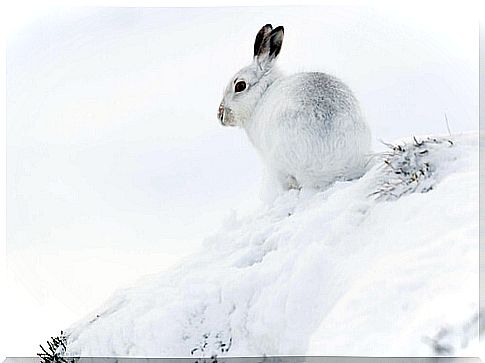
It is a polygamous species and begins to reproduce before reaching one year of age, especially in spring, during the months of April and May. They make burrows in which to take refuge with their little ones until they have enough hair on their skin to protect them from the cold.
Its hind legs are longer than its front legs, allowing it to propel itself for speed. Its body is robust and rounded, with a small head and almost non-existent tail. Their eyes are usually ebony black and with a very marked almond shape.
Arctic hare feeding
Thinking about the habitat of the Arctic hare, one of the first questions that come to mind is what it feeds on, because everyone knows that in snowy and cold areas there is not much to choose from.
Well, its diet is mainly based on woody plants such as dwarf willow, moss, lichens, some berries that it can find when temperatures rise, leaves, branches and roots.
Depending on the season of the year, this is how this small animal feeds, which does not conform to what the land gives it, it can also feed on fish and small prey. What seems to be clear when looking at the type of diet of the Arctic hare is that life in the snow is not easy and you have to adapt the stomach to what you are putting in your path.

The question is, how do you find food in the snow? Well, thanks to its excellent sense of smell capable of detecting the plants that are under the snow. It’s a great digger that won’t take more than a few seconds to find what you need underground. For example, willow branches are often found buried.
Its nose is such that it can even know when there is a trap with meat set by hunters and it knows how to dig until its food is requisitioned. This is one way to stay alive in the harshest winters.
There are four subspecies of Arctic hare:
- Lepus articus articus.
- Lepus articus bangsii.
- Lepus articusgroenlandicus.
- Lepus articusmonstrabilis.
You see that this small animal, lonely where they exist, has to fight like many others to survive in its natural habitat, but its body and mind seem to be programmed for it. What did you like to get closer to an animal so far unknown?




